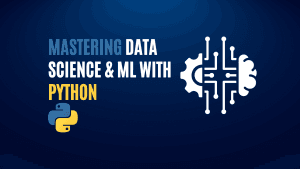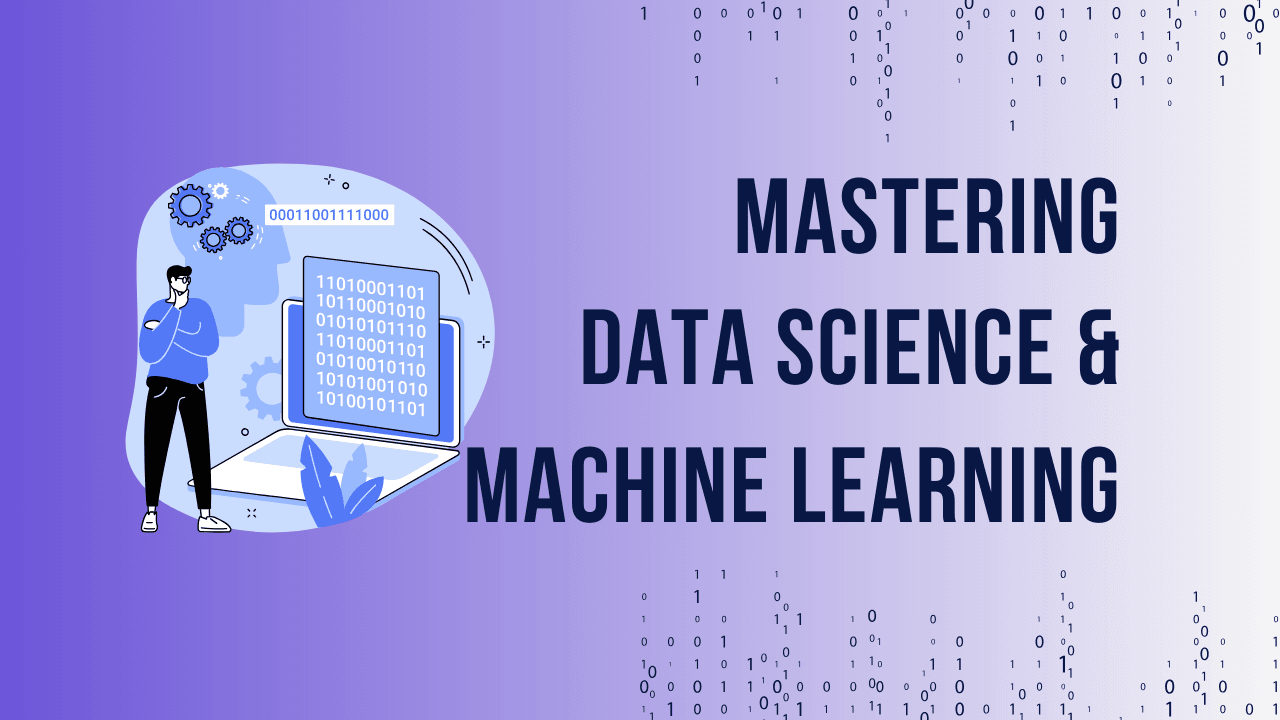Table of Contents
ToggleIntroduction to Financial Inclusion in India
Financial inclusion is an important objective for India’s long-term economic growth, aiming to provide affordable and accessible financial services to all citizens. The goal is to ensure that every individual, regardless of their socio-economic status, has access to basic banking, credit, insurance, and investment services. India has made significant strides in this area, with government initiatives like the Pradhan Mantri Jan Dhan Yojana (PMJDY) focusing on banking the unbanked. However, despite these efforts, challenges remain, particularly in reaching remote and underserved areas.
The rise of technology offers new hope. Artificial intelligence (AI) and data science have the potential to revolutionize the financial sector, breaking down barriers to financial inclusion and improving access to services for all citizens. But how exactly are these technologies influencing financial inclusion in India?
Ready to take you Data Science and Machine Learning skills to the next level? Check out our comprehensive Mastering Data Science and ML with Python course.
The Role of Technology in Financial Inclusion
In recent years, technology has significantly transformed how financial services are provided in India. The advent of digital banking, mobile wallets, and UPI-based payments has made it easier for people, even in remote areas, to access financial services. These technologies have expanded the reach of traditional banks, brought down costs, and improved convenience for users.
As mobile phone penetration increases, digital transactions have surged. However, the real game changer is the integration of AI and data science into the financial system. These tools are helping banks and financial institutions better understand their customers and provide services tailored to their specific needs, helping to close the gap between financial services and underserved populations.
Introduction to AI and Data Science
Artificial intelligence (AI) refers to the simulation of human intelligence processes by machines, enabling them to perform tasks like problem-solving, learning, and adaptation. Data science, on the other hand, involves analyzing large sets of data to uncover patterns, make predictions, and drive decision-making.
Together, these two technologies are transforming industries globally, and the financial sector is no exception. In India, AI and data science are being harnessed to bring financial services to those who were previously excluded. But how do these technologies work in practice when it comes to financial inclusion?
The Intersection of AI, Data Science, and Financial Inclusion
AI and data science are helping financial institutions in India tackle some of the core challenges of financial inclusion—access, affordability, and awareness. By leveraging data, banks can create personalized products, such as tailored loan schemes, and target underserved communities more effectively. AI systems can analyze vast amounts of data, including non-traditional sources like social media activity or mobile usage patterns, to provide financial services to people with limited credit histories.
AI in India's Financial Sector
One of the most visible ways AI is influencing India’s financial sector is through chatbots and virtual assistants. These AI-driven tools allow customers to access information and support 24/7, even in remote areas. Fraud detection is another critical area where AI is making a difference. With AI-powered systems, banks can monitor and detect suspicious activities in real-time, reducing fraud and improving security for customers.
In the loan approval process, AI algorithms can assess the risk profiles of applicants quickly and accurately. This allows financial institutions to extend loans to individuals who may not have a formal credit score but demonstrate creditworthiness through other data points.
AI and Data Science in Rural Banking
India’s rural population has long been underserved when it comes to access to financial services. The traditional banking infrastructure often struggles to penetrate deep into remote areas due to logistical and cost-related barriers. However, AI and data science are starting to bridge this gap by enabling digital rural banking solutions that require minimal physical infrastructure.
For example, AI-powered chatbots and voice-enabled interfaces in local languages allow rural populations to interact with financial institutions without having to travel to distant bank branches. Additionally, data science is enabling the analysis of alternative data—such as mobile phone usage, utility payments, and even agricultural productivity—to assess creditworthiness in populations that have historically lacked formal financial documentation.
These innovations are transforming how financial institutions can serve rural communities by offering microloans and other financial products tailored to the specific needs of farmers and small businesses. The benefits are twofold: expanding financial access while helping financial institutions tap into a previously unreachable market.
AI-driven Credit Scoring Models
One of the most impactful ways that AI and data science are influencing financial inclusion in India is through the development of AI-powered credit scoring models. Traditionally, individuals without a formal credit history—such as those working in the informal economy—faced challenges in obtaining loans or credit. AI is changing this by analyzing non-traditional data sources to evaluate the creditworthiness of such individuals.
For example, AI systems can analyze data from mobile payments, social media activity, and utility bill payments to assess an individual’s ability to repay loans. This approach is especially beneficial for those who do not have a traditional credit score or bank account but demonstrate financial responsibility through other means.
Microfinance institutions in India have started using these AI-driven models to provide loans to low-income individuals and small businesses, significantly expanding their reach. By lowering the cost of credit risk assessment and speeding up loan approval processes, these models are helping bring more people into the formal financial system.
Ready to take you Data Science and Machine Learning skills to the next level? Check out our comprehensive Mastering Data Science and ML with Python course.
Data Science in Risk Management
Effective risk management is crucial for any financial institution, especially in a country as diverse as India where financial risks can vary widely across different regions and customer segments. Data science plays an essential role in helping banks and other financial institutions predict and mitigate these risks by analyzing large datasets.
Using predictive analytics, banks can identify potential defaulters, assess loan risk more accurately, and prevent fraud before it happens. In India, this has helped banks extend credit more confidently to underserved populations while keeping risks in check.
Moreover, financial institutions are using real-time data to monitor market trends, customer behavior, and economic shifts, enabling them to make more informed decisions. In a country with a large population and vast geographical diversity, data science is proving to be an invaluable tool in maintaining the stability of the financial sector while expanding inclusion.
Financial Literacy and AI
A significant challenge in achieving financial inclusion in India is financial literacy. Many individuals, particularly in rural areas, are unaware of the benefits of financial products like savings accounts, insurance, or credit options. AI is helping to address this by providing interactive and personalized learning tools that make financial education more accessible.
For instance, AI-powered virtual financial advisors can provide guidance on personal finance management in local languages, helping individuals understand how to manage their money, save for the future, and invest in financial products. These tools can also be customized based on an individual’s financial literacy level, offering step-by-step instructions for using digital banking services, making payments, and applying for loans.
By making financial education more engaging and tailored, AI is playing a key role in empowering individuals to make informed financial decisions, which is essential for long-term financial inclusion.
The Role of AI and Data Science in Government Schemes
India’s government has launched several initiatives aimed at improving financial inclusion, such as the Pradhan Mantri Jan Dhan Yojana (PMJDY) and the PM Street Vendor’s AtmaNirbhar Nidhi (PM SVANidhi) scheme. AI and data science are now being used to enhance the reach and efficiency of these programs.
For instance, AI-driven systems help streamline beneficiary identification, ensuring that government subsidies and financial services reach those who need them most. Data analysis enables the government to track the progress of these schemes in real-time, identifying areas where additional support may be needed.
In the case of PM SVANidhi, which provides micro-loans to street vendors, data science is helping to map vendors’ locations, assess loan applications quickly, and monitor loan repayment behavior. By using these technologies, the government can ensure that its financial inclusion programs are reaching their full potential.
Conclusion: The Road Ahead
In conclusion, AI and data science are playing a pivotal role in helping India achieve its financial inclusion goals. By expanding access to financial services, improving risk assessment, and offering personalized financial education, these technologies are helping bring millions of underserved individuals into the financial system. However, challenges such as data privacy, infrastructure limitations, and the cost of implementation must be addressed to ensure that the benefits of AI and data science are realized by all.
The road ahead is filled with promise, as technology continues to evolve and more people are brought into the fold of formal financial services. As India embraces the potential of AI and data science, the dream of complete financial inclusion becomes more achievable.
FAQs
What is financial inclusion in India? Financial inclusion in India refers to providing affordable access to financial services like banking, credit, insurance, and investment opportunities to all citizens, especially those in underserved areas.
How is AI improving financial inclusion in rural India? AI is improving financial inclusion in rural India by offering digital banking services through mobile platforms, enabling financial access without the need for physical bank branches.
What role does data science play in financial services? Data science helps financial institutions analyze large amounts of customer data to understand needs, manage risks, and offer personalized financial products and services.
How do AI-driven credit scoring models work? AI-driven credit scoring models assess creditworthiness using alternative data sources like mobile phone usage, social media activity, and utility payments, enabling loans for people without formal credit histories.
What are the challenges of implementing AI in financial inclusion? Key challenges include data privacy concerns, limited technological infrastructure in rural areas, and the high cost of implementing AI technologies.
How is AI contributing to government financial inclusion schemes? AI helps improve the efficiency and reach of government schemes like PMJDY and PM SVANidhi by enabling real-time data analysis, beneficiary identification, and faster loan approvals.
Our Students Testimonials:
Ready to take you Data Science and Machine Learning skills to the next level? Check out our comprehensive Mastering Data Science and ML with Python course.



